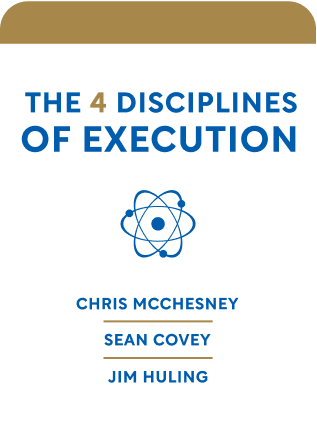

This article is an excerpt from the Shortform book guide to "The 4 Disciplines of Execution" by Chris McChesney, Sean Covey, and Jim Huling. Shortform has the world's best summaries and analyses of books you should be reading.
Like this article? Sign up for a free trial here .
What are “WIGs” or “Wildly Important Goals”? What are some things you should consider when deciding on your WIGs?
Wildly Important Goals form the crux of the first discipline of the 4DX. These are the goals that should be your primary focus. Once you choose your WIGs, the next step is to choose your team goals that will support the WIGs.
Keep reading to learn about the concept of WIG goals.
Discipline 1: Focus
In Discipline 1, you will choose which goals to make your top priorities—ideally one or two goals, three at the absolute most. The authors call these “Wildly Important Goals (WIG goals)” in order to emphasize that they should be your primary focus. The authors add that choosing so few goals may feel counterintuitive, but narrowing your focus is crucial for success because the human mind can only devote its best efforts to one thing at a time.
(Shortform note: Although the authors begin this book by separating strategy and execution, in Section 1 they acknowledge that the lines between the two are blurred—that a good strategy must, by definition, be executable. That’s why the first of their 4 Disciplines is about setting effective goals and devoting the proper amount of energy to them, which is generally considered to be part of strategy, not execution. In other words, in order to execute your strategy, you must first make sure that your strategy is a good one.)
For an organization, senior leaders choose the main goal or goals. Then, each team comes up with its own goals to support the organizational goal.
| Consider BHAGs—Big, Hairy, Audacious Goals If you’re a senior leader choosing a goal for your entire organization, Built to Last authors Jim Collins and Jerry I. Porras suggest choosing something bold, risky, and long-term: what they call “Big, Hairy, Audacious Goals (BHAGs).” The authors argue that such goals are highly motivating, leading to greater efforts and, therefore, better results than “safe” conservative goals. They say that’s true even though BHAGs can take anywhere from 10 to 30 years to accomplish, and even then they only have a 50% to 70% success rate. The important thing is to believe you can achieve your BHAG and put forth the necessary effort to do so. Your BHAG should be: Clear: Make your goal concrete and specific (for example, “sell X units” rather than “be the best”). Couch it in simple language that’s easy to remember and communicate to others. Compelling: BHAGs are meant to be inspirational and motivating. Therefore, it’s important to pick a goal that you and your employees can get excited about. Challenging and risky: Pick something that has a chance to fail, even if you do everything right while trying to achieve it. If you’re guaranteed to accomplish your goal, then you’re not thinking big enough. Appropriate: Your goal should reinforce your company’s image and ideology (or the desired image and ideology). For example, a company known for exclusive, highly expensive luxury goods might want its goal to relate to quality or customer satisfaction; it wouldn’t want to set a sales-based goal that drives it to sell cheaper, lower-quality merchandise. Note that BHAGs are for organizational goals—they’re not appropriate for small team goals. 4 Disciplines will explain in a later section that team commitments should be short-term and revisited on a weekly basis. |
McChesney, Huling, and Covey give four rules for choosing team goals:
- Rule #1: No team may choose more than two goals.
- Rule #2: Team goals must directly support the overall goal.
- Rule #3: Teams get to choose their own goals. Senior leaders can veto goals they don’t feel will support the organization, but they cannot choose the team’s goal.
- Rule #4: All goals must include an end point, expressed as follows: “From (current situation) to (desired situation) by (deadline).”
Having laid out four rules for goals, the authors suggest choosing goals by following these four steps:
1. Brainstorm. Ask yourself what kind of change would have the most impact on your organization or team. Consider things that aren’t working and things that, if they worked even a little better, would have a large impact. Involve peer leaders and your team in the brainstorming.
(Shortform note: Most people are familiar with brainstorming, but the person who invented the process—advertising executive Alex Osborn—included a step that many people overlook: Combine and improve the ideas. In other words, many “brainstorming” sessions consist entirely of people throwing ideas at the wall to see what sticks, but true brainstorming means looking for common ground between those ideas and seeing how they can build upon each other.)
2. Appraise. Consider the list of team goals you brainstormed. Which ones will have the highest impact on the company goal?
(Shortform note: You might reasonably be concerned about picking the wrong goal or goals—what if your appraisal is flawed, or the market situation changes? To combat this fear, bear in mind that Rework authors David Heinemeier Hansson and Jason Fried say that the single most dangerous thing you can do in business is fail to make a decision. A bad decision—such as choosing the wrong goal to pursue—can always be reevaluated and changed; a non-decision leaves you stuck, with no feedback to help you choose a wiser course of action.)
3. Check. Make sure that the goal you’ve picked is reasonable. The authors’ criteria for a reasonable goal are: The goal must support the company’s overall goal, must be measurable, must be driven by the team rather than the leader, and shouldn’t depend more than 20% on another team.
(Shortform note: It will be tempting to set easily achievable goals that you can feel good about accomplishing, but it can be more effective to set ambitious goals, or even impossible ones. In Awaken the Giant Within, Tony Robbins explains that setting big goals inspires you to work harder than setting goals you’re confident about reaching—so long as you work with the mindset that progress toward your goal constitutes success, and falling short of the goal is not failure.)
4. Write. Choose your goal and write it in the format specified in Rule #4: “From (current situation) to (desired situation) by (deadline).”
(Shortform note: Writing down goals isn’t just for recordkeeping, it also makes you more likely to follow through and achieve those goals—20% to 40% more likely, according to one study. This is because when you write something down, you’re more likely to retain it and consider it important than if you just trust yourself to remember your goal.)

———End of Preview———
Like what you just read? Read the rest of the world's best book summary and analysis of Chris McChesney, Sean Covey, and Jim Huling's "The 4 Disciplines of Execution" at Shortform .
Here's what you'll find in our full The 4 Disciplines of Execution summary :
- The 4 disciplines that can make any strategy a successful reality
- Why a great plan falls apart when you don't think adequately about execution
- The 6 steps you need to scale the 4DX model across an entire organization






